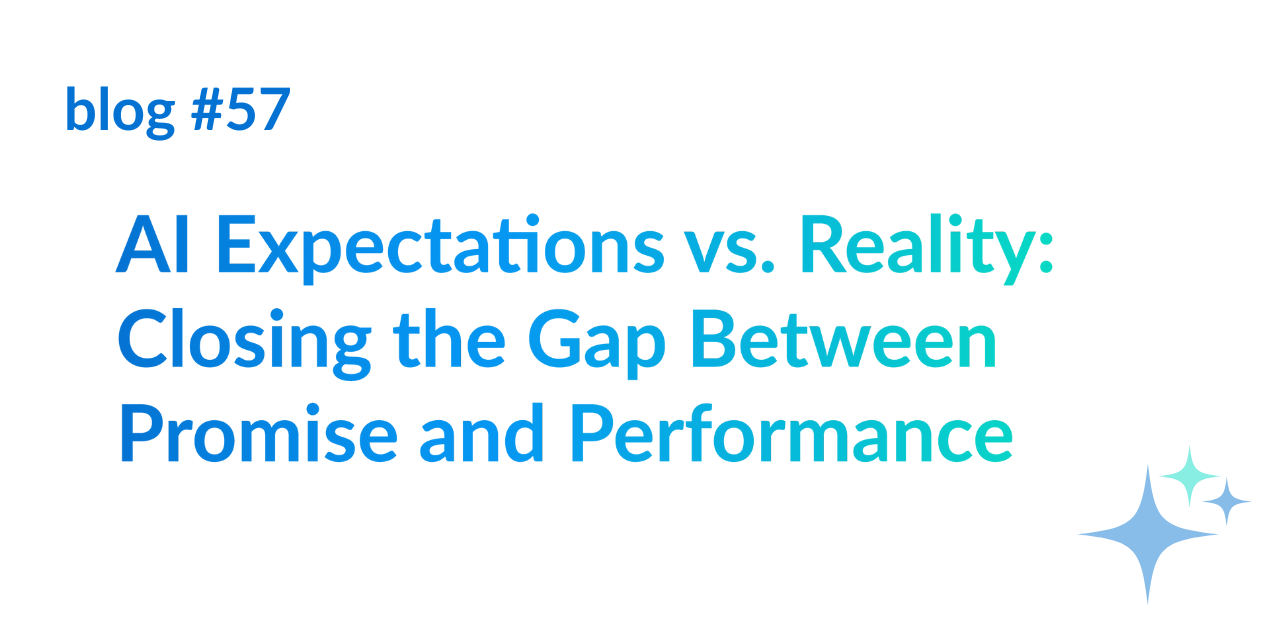Nearly 80% of companies are experimenting with GenAI. From Copilots and chatbots to automation pilots and data analysis tools, AI implementation has skyrocketed. And yet, for all the buzz, many CEOs are scratching their heads: where’s the return on investment? In fact, studies show that while adoption rates are high, only about 25% of leaders claim that AI lived up to their ROI expectations.
This gap between promise and performance isn’t because AI lacks potential—it’s because many businesses approach it with the wrong assumptions. The hype around AI often creates myths that obscure its practical value. That’s why we created this eBook—to debunk the misconceptions that hold CEOs back from realizing real ROI and to highlight what successful AI adoption truly looks like. Let’s look at four of the most common misconceptions surrounding AI and the realities that unlock its potential.
Expectation: AI means copilots, chatbots, or massive custom builds
Reality: Real impact comes from targeted AI tools, not flashy systems
The misconception is that AI lives in generalized buckets—copilots, customer chatbots, or expensive bespoke systems—so anything outside those lanes feels foreign and unknown. In reality, AI isn’t a generic automation system and it’s not confined to a few flashy formats. The fastest ROI often comes from fit-for-purpose, off-the-shelf tools—like invoice extraction, sales support, knowledge search, content drafting, and more—tuned to your environment and data. The key is simple: match the right platform to the right problem.
This is where a disciplined system selection process pays off—to translate business needs into the right tool choice. At its core, system selection is about ensuring the tool you choose truly addresses your business pain points and integrates seamlessly with your existing systems. Skipping this step often leads to investing in platforms that look impressive on paper but fail to deliver real value in practice. By taking the time to strategically evaluate systems, CEOs avoid a costly misstep and instead implement AI solutions that generate measurable ROI.
Expectation: AI is only for large companies
Reality: SMBs can win big by starting small
A second common belief is that only enterprise giants have the resources, data, and budgets to adopt AI effectively. Small and midsize businesses (SMBs) often hold back, assuming AI is too expensive or that meaningful ROI is out of reach.
The reality is the opposite, because precision often beats scale. AI doesn’t require an organization to be big—it requires an organization to be focused. For example, a single-location restaurant using AI to forecast demand and reduce food waste can see immediate cost savings, while national chains struggle to roll out various AI solutions consistently across thousands of locations.
By narrowing scope and targeting clear use cases, SMBs can capture competitive advantages that even larger enterprises struggle to realize. And with today’s market of off-the-shelf AI tools, companies no longer need to build solutions from scratch to achieve impact.
Expectation: AI is too risky and unsafe for business use
Reality: With the right guardrails, AI is safer than you think
A common expectation is that AI is too risky or insecure to use in real business settings, leaving organizations worried about data breaches or compliance issues. Even highly regulated industries and government agencies are already leveraging AI securely, supported by strong governance frameworks, advanced security measures, and built-in compliance checks.
Instead of being a liability, AI often enhances security by monitoring systems in real time, detecting anomalies, and identifying threats faster than traditional methods. Another misconception is that AI is only safe for large enterprises with massive resources, but small and midsize organizations can also see significant wins when they apply AI strategically to targeted pain points.
The real risk lies not in adopting AI, but in standing still while competitors move forward with secure, well-planned implementations. Ultimately, AI is not an uncontrollable gamble but a powerful tool that delivers value when paired with clear objectives, proper oversight, and the right platform for the problem at hand.
Expectation: Businesses can dabble in AI without a plan & see results
Reality: Without an AI strategy, adoption rarely sticks
A common expectation is that organizations can simply dabble in AI—experimenting with a few tools or pilots—and quickly see meaningful results. Without a clear plan, budget, and defined objectives, most of these efforts fizzle out. Research shows that nearly one-third of AI projects are done “just for show,” and those initiatives rarely deliver lasting impact.
To succeed, companies need to treat AI like any other strategic investment: set measurable goals, align leadership, and ensure governance and accountability are in place. When AI projects are backed by intentional planning, they can scale, integrate into workflows, and produce measurable ROI instead of isolated experiments. The organizations seeing the most success aren’t dabbling—they’re approaching AI adoption with purpose and discipline. The real differentiator isn’t who experiments with AI, but who executes with clarity and direction.
Ready to stop dabbling with AI and start seeing impact in your business? The reality is that only 16% of AI projects ever make it out of the pilot stage—but with the right guidance, yours can be one of them. Take our AI Readiness Assessment or schedule a no-pressure intro call to get started. We’ll help you identify a high-impact win and execute it with confidence.

